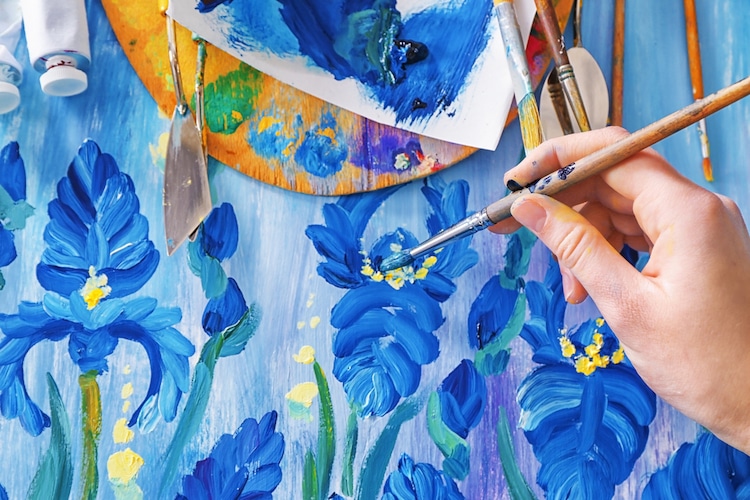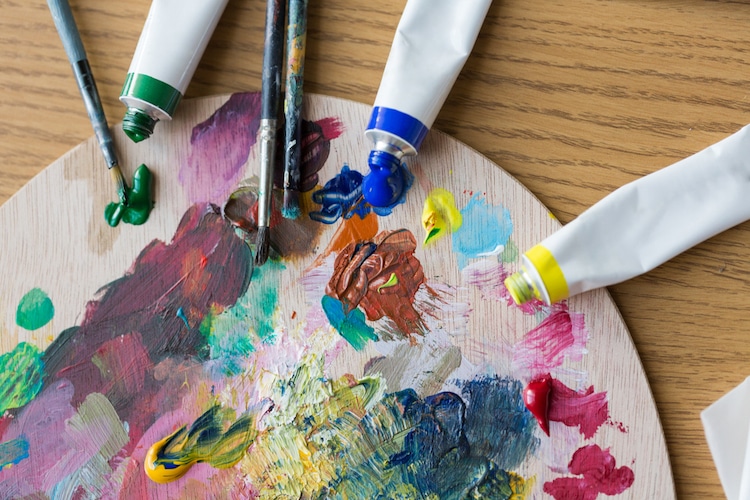
Stock Photos from Africa Studio/Shutterstock
This post may contain affiliate links. If you make a purchase, My Modern Met may earn an affiliate commission. Please read our disclosure for more info.
Whether you are new to acrylics or have been painting with them for some time, there are always new techniques to learn. By expanding your knowledge of acrylic painting techniques, it’s possible to work creatively with unparalleled freedom. So don’t be afraid to experiment and try some new ways of working with paint.
As you learn to paint with acrylics, you’ll slowly build up your repertoire of tricks to create any image you desire. And by beginning to work with some of the techniques of the great Old Master painters, you’ll be able to produce even more painterly pieces. To help you along, beginners will find tons of painting tutorials on YouTube that will give great insight into and tips on how to work with acrylics.
To get you on your way, we’ve explored 11 of the most common acrylic painting techniques, along with quick tutorials that will put you on the path to artistic freedom. We’ll also look at some of the acrylic mediums that will help push your pigments to the next level by changing their drying time, texture, and consistency.
Need more information on which acrylics will work for you? Check out our guide on how to select the best acrylic paints.

Stock Photos from Syda Productions/Shutterstock
Learn how to paint with acrylics by mastering these easy painting techniques.
Drybrush
A great technique to add dimension and texture to paintings, drybrush can be especially useful in landscape painting to create blades of grass or fluffy clouds. It’s also an excellent technique to add highlights and dimension to an underpainting. Just load your brush with paint and test it on another surface to begin with in order to ensure that you have the right quantity of paint to create fine uneven lines.
Wash
The acrylic wash technique will allow you to build up transparent layers of colors for a watercolor look. The finished result will set permanently and you’ll want to be careful about how much water you add—a good rule of thumb is no more than 30% water to maintain the paint’s vibrant colors and binding properties. Using a flow aid medium will allow you to achieve a wash consistency without compromising the pigment.
Stippling
Most people think of Georges Seurat and Pointillism when stippling is mentioned. This easy, versatile technique is applied with stiff brushes that allow small dots of paint to be applied across the surface. By layering different colors, it’s possible to make subtle color blends that create dimension and texture in any painting.
Pouring
Acrylic pouring is a fun, creative way to produce abstract art. The psychedelic paintings that acrylic pouring produces can be enhanced by incorporating different pouring mediums. You’ll want to use fluid acrylics and prepare yourself for a messy but fun experience that produces a different end result each time!
Splattering
Channel your inner Jackson Pollack and attempt the splattering technique to create abstract masterpieces. Using fluid acrylics and thinning them with water or a flow medium will greatly help the process. You can either drip from above or flick your wet brush to get a spray of paint. Be sure to let colors dry between spatters in order to get clean, vivid hues.
Next: Learn even more about how to paint with acrylics.
